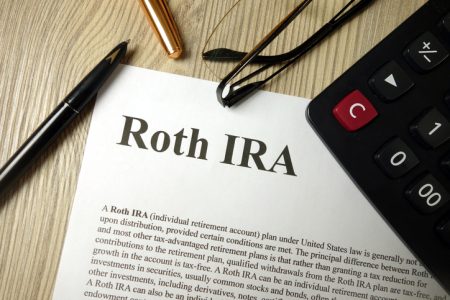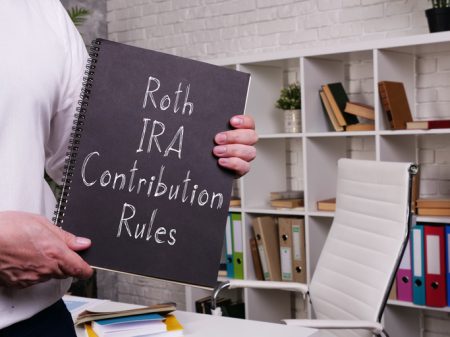Many people who contribute to a 401(k) wonder if they can also make SEP IRA contributions. The answer depends on factors like employment status, income sources and how the SEP IRA is structured. Business owners and self-employed individuals often have more flexibility, while traditional employees generally cannot contribute directly to a SEP IRA unless they are considered an employer. Understanding the rules can help clarify how different retirement plans can work together.
A financial advisor can help you balance your investment portfolio and plan ahead with all of your retirement account contributions.
Can I Contribute to a 401(k) and SEP IRA?
You can contribute to both a 401(k) and a SEP IRA in the same year, but only if you have separate sources of earned income. For example, if you work full-time for an employer offering a 401(k) and also run a side business, you may be eligible to make SEP IRA contributions based on your self-employment income.
However, the total amount you contribute across all plans must stay within the IRS limits for the year. If you contribute $23,500 to your 401(k) in 2025, your SEP IRA contributions would be limited by the overall cap of $70,000, considering both plans’ combined totals. For instance, if your employer makes a $5,000 match to your 401(k), that $5,000 counts toward the $70,000 limit, reducing how much you could contribute to the SEP IRA.
If you own your own business and sponsor both a 401(k) and a SEP IRA for yourself, the rules become more complex, and specialized plan design may be needed. In most cases, contributing to both accounts is straightforward only when you are an employee at one job and self-employed separately.
401(k) vs. SEP IRA: What’s the Difference?

A 401(k) is a retirement plan typically offered by employers to employees, allowing participants to make salary deferral contributions, often with the option of employer matching. Contribution limits for 401(k) plans are higher for employee deferrals compared to many other retirement accounts, with separate limits for employer contributions. Investments inside a 401(k) are usually limited to a menu selected by the plan sponsor.
A SEP IRA, short for Simplified Employee Pension Individual Retirement Account, is designed primarily for self-employed individuals and small business owners. Only employer contributions are permitted—employees cannot contribute their salary deferrals. SEP IRAs offer high contribution limits based on a percentage of income, and investment choices are generally broader since the account holder can open the SEP IRA with any financial institution that offers it.
While both plans provide tax-deferred growth, their structure, eligibility, and funding mechanisms differ significantly. A person participating in a 401(k) through one employer may still qualify to open a SEP IRA if they have separate self-employment income, allowing for contributions beyond the 401(k) limits under certain conditions.
| Feature | 401(k) | SEP IRA |
|---|---|---|
| Who Contributes | Employees and employers | Employers only |
| Employee Salary Deferrals | Allowed | Not allowed |
| Contribution Limits (2025) | $23,500 (employee only) $70,000 (employee + employer) |
Up to 25% of compensation or $70,000, whichever is less |
| Catch-Up Contributions | Additional $7,500 (age 50+) Additional $11,250 (age 60–63) |
Not available |
| Loan Options | Loans may be permitted | Loans not permitted |
Can You Roll a 401(k) into a SEP IRA?

You can roll over a 401(k) into a SEP IRA, but the SEP IRA must first be set up to accept rollover contributions. A SEP IRA operates similarly to a traditional IRA once established, which means it can receive rollovers from other qualified retirement plans like a 401(k).
For example, if you leave an employer where you had a 401(k), you could open a SEP IRA through your self-employed work and transfer your 401(k) balance into it. The funds would retain their tax-deferred status, and you would not trigger any taxes or penalties as long as the rollover is handled correctly as a direct transfer.
However, once the rollover is complete, the money from the 401(k) is treated like any other SEP IRA asset. Future SEP IRA contributions would remain employer-only, but the rolled-over funds could be invested alongside them. Careful recordkeeping may be needed if you later want to perform a Roth conversion or another transaction involving the account.
Bottom Line
Combining a 401(k) with a SEP IRA can create added flexibility for those with multiple income streams, but the rules surrounding contributions and rollovers require careful attention. Whether working a full-time job, running a business, or both, understanding how these accounts interact can open opportunities to build retirement savings across different types of plans. Each account has its structure and benefits, giving individuals room to tailor their retirement strategy to their unique financial situation.
Tips for Retirement Planning
- Retirement contributions are a big part of retirement, but there is so much more to consider. A financial advisor can help you with all aspects of your long-term financial planning. Finding a financial advisor doesn’t have to be hard. SmartAsset’s free tool matches you with vetted financial advisors who serve your area, and you can have a free introductory call with your advisor matches to decide which one you feel is right for you. If you’re ready to find an advisor who can help you achieve your financial goals, get started now.
- Not sure how much you need to save for retirement? You may want to start the journey by estimating the amount with a retirement calculator.
Photo credit: ©iStock.com/sanjagrujic, ©iStock.com/Damir Khabirov, ©iStock.com/PeopleImages
Read the full article here











